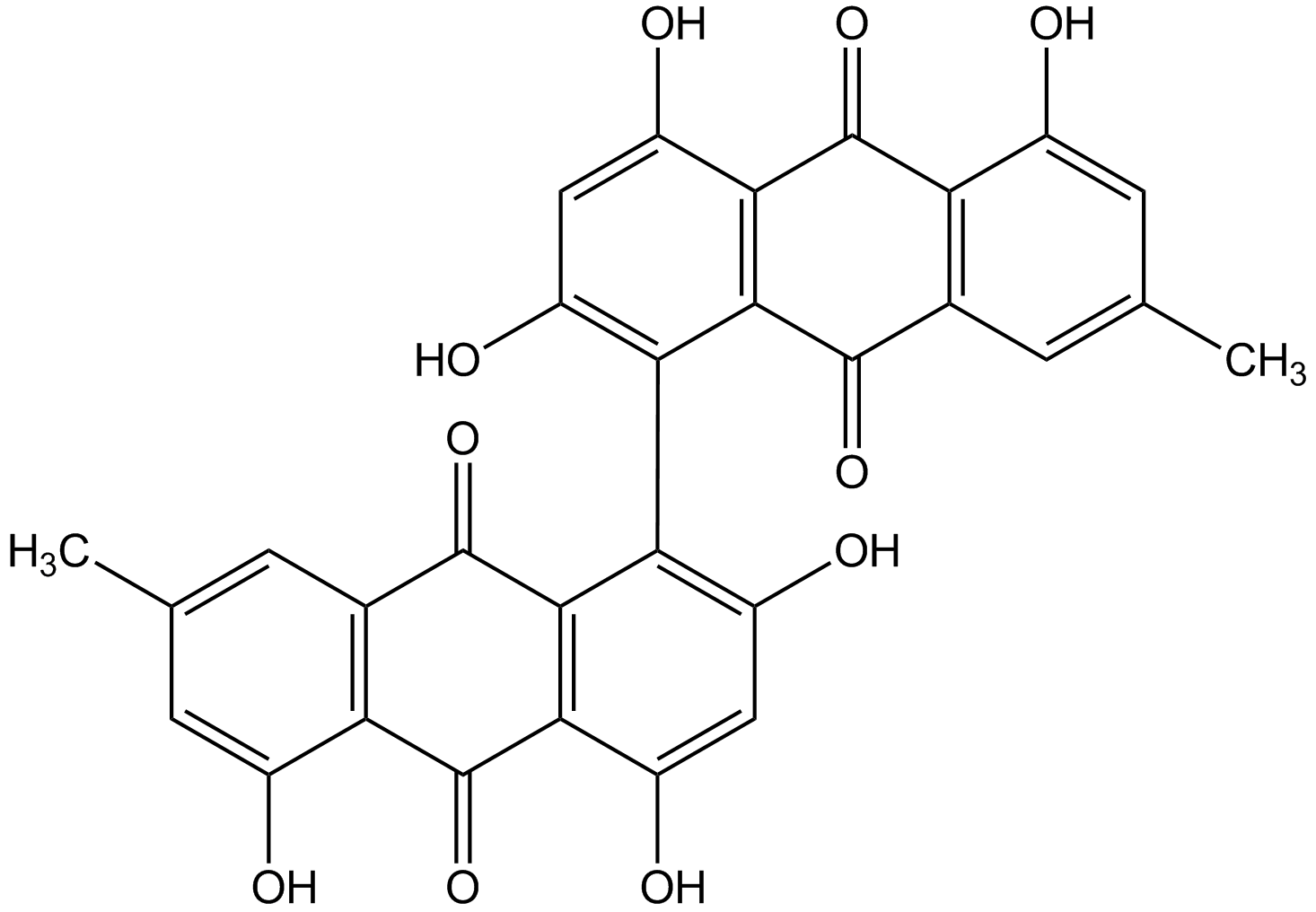
Chemical Structure
Skyrin [602-06-2]

AG-CN2-0001
Overview
- SupplierAdipoGen Life Sciences
- Product NameSkyrin [602-06-2]
- Delivery Days Customer10
- CAS Number602-06-2
- CertificationResearch Use Only
- Estimated Purity>97%
- Molecular FormulaC30H18O10
- Molecular Weight538.5
- Scientific DescriptionChemical. CAS: 602-06-2. Formula: C30H18O10. MW: 538.5. Non-peptidic anti-diabetic agent. Receptor-selective glucagon antagonist. Free radical species ( OH, R ) and singlet oxygen (1O2) scavenger. Mycotoxin. Cytotoxic. Antioxidant. Inhibitor of botulinum neurotoxin serotype A (BoNTA). Anti-MRSA compound. Antibiotic. - Non-peptidic anti-diabetic agent [1]. Receptor-selective glucagon antagonist [1]. Free radical species ( OH, R ) and singlet oxygen (1O2) scavenger [2]. Mycotoxin [3, 4]. Cytotoxic [3, 4]. Antioxidant [2]. Inhibitor of botulinum neurotoxin serotype A (BoNTA) [5]. Anti-MRSA compound [6]. Antibiotic [7].
- SMILESCC1=CC2=C(C(O)=C1)C(=O)C1=C(C2=O)C(=C(O)C=C1O)C1=C(O)C=C(O)C2=C1C(=O)C1=C(C(O)=CC(C)=C1)C2=O
- Storage Instruction-20°C,2°C to 8°C
- UNSPSC12352200
References
- Effects of skyrin, a receptor-selective glucagon antagonist, in rat and human hepatocytes: J.C. Parker, et al.; Diabetes 49, 2079 (2000)
- Antioxidant and scavenging activity of skyrin on free radical and some reactive oxygen species: F. Vargas, et al.; Avances en Quimica 3, 7 (2008)
- The bioactive metabolites of the mangrove endophytic fungus Talaromyces sp. ZH-154 isolated from Kandelia candel (L.) Druce: F. Liu, et al.; Planta Med. 76, 185 (2010)
- A comparative study on cytotoxicities and biochemical properties of anthraquinone mycotoxins emodin and skyrin from Penicillium islandicum Sopp: K. Kawai, et al.; Toxicol. Lett. 20, 155 (1984)
- Fungal bis-naphthopyrones as inhibitors of Botulinum neurotoxin serotype A: J. H. Cardellina II, e. Al.; ACS Med. Chem. Lett. 3, 387 (2012)
- Atropisomeric dihydroanthracenones as inhibitors of multiresistant Straphylococcus aureus: R. Bara, et al.; J. Med. Chem. 56, 3257 (2013)
- Antibiotically active metabolites from Talaromyces wortmannii, an endophyte of Aloe vera: R. Bara, et al.; J. Antibiot. 66, 491 (2013)
